How to Fix Uneven Floorboards Before Sanding

Ensure a Smooth, Professional Finish for Your Wooden Floors in Your London Home
Introduction
Before sanding your wooden floors, it’s crucial to address any uneven floorboards to achieve a smooth and professional finish. Uneven floorboards can result from various factors, including wear and tear, moisture, or improper installation. This guide provides step-by-step instructions on how to fix uneven floorboards before sanding, ensuring your floors look their best in your London home.
1. Identify the Problem Areas
The first step in fixing uneven floorboards is to identify the areas that need attention:
- Visual Inspection: Walk around the room and visually inspect the floor for any raised or sunken boards.
- Feel for Irregularities: Run your hand over the surface to feel for any unevenness.
- Use a Straightedge: Place a straightedge or a long level on the floor to detect any dips or high spots.
2. Secure Loose Boards
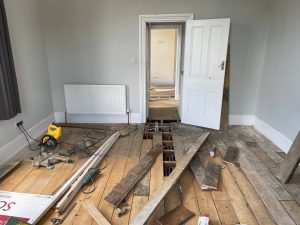
Loose floorboards can cause unevenness and need to be secured before sanding:
- Re-nail or Screw: Use finishing nails or screws to secure loose boards. Ensure the nails or screws are driven below the surface to avoid damaging the sanding equipment.
- Glue Down Loose Boards: Apply wood glue to the underside of loose boards and press them down firmly. Use weights or clamps to hold them in place until the glue dries.
3. Sand Down High Spots
High spots can be sanded down to create an even surface:
- Use a Belt Sander: A belt sander is effective for sanding down high spots. Be careful to sand evenly to avoid creating dips.
- Hand Sanding: For smaller areas, use a sanding block with coarse-grit sandpaper to sand down high spots.
- Check Progress: Frequently check your progress with a straightedge to ensure the surface is becoming even.
4. Fill Low Spots
Low spots need to be filled to create a level surface:
- Wood Filler: Use a high-quality wood filler to fill in low spots. Apply the filler with a putty knife, pressing it firmly into the gaps.
- Let It Dry: Allow the wood filler to dry completely according to the manufacturer’s instructions.
- Sand Smooth: Once the filler is dry, sand it smooth with fine-grit sandpaper to ensure it is level with the surrounding floor.
5. Replace Damaged Boards
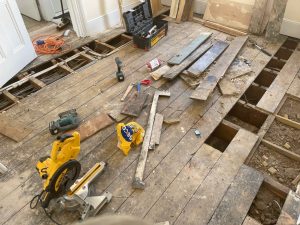
In some cases, damaged or warped boards may need to be replaced entirely:
- Remove the Damaged Board: Carefully remove the damaged board using a pry bar or a saw.
- Cut a Replacement: Measure and cut a new board to fit the space. Ensure the new board matches the existing wood type and finish.
- Install the New Board: Secure the new board in place with nails or screws, ensuring it is flush with the surrounding boards.
- Sand the Area: Sand the new board to match the level of the surrounding floor, ensuring a smooth transition.
6. Final Checks
Before proceeding with the full sanding process, perform final checks to ensure the floor is even:
- Use a Straightedge: Once again, use a straightedge to check the entire floor for any remaining uneven spots.
- Make Adjustments: Make any necessary adjustments, such as additional sanding or filling, to achieve a completely even surface.


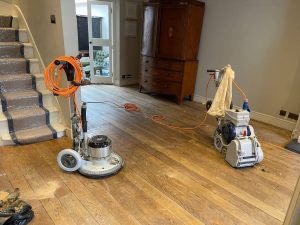
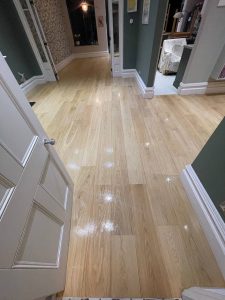
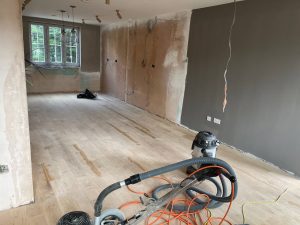
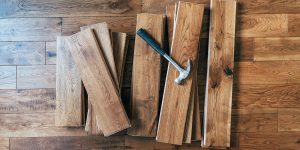
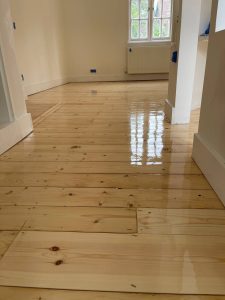
Top Floor Sanding Trends in 2024
As we move into 2024, floor sanding and finishing techniques continue to evolve, blending innovation[Read more...]
Case Studies: Successful Floor Sanding Projects in London
Floor sanding is an essential process for restoring and enhancing the beauty of wooden floors.[Read more...]
The Benefits of Floor Sanding for Pet Owners
The Benefits of Floor Sanding for Pet Owners As a pet owner, maintaining beautiful[Read more...]
Eco-Friendly Floor Sanding: Sustainable Practices for Your Home
As environmental awareness continues to grow, many homeowners in London are seeking ways to make[Read more...]
How to Plan a Floor Sanding Project Around Your Schedule
How to Plan a Floor Sanding Project Around Your Schedule Efficient project management[Read more...]
The Best Hardwood Species for Floor Sanding
The Best Hardwood Species for Floor Sanding Enhance Your London Home’s Floors with the[Read more...]
How to Handle Floor Scratches Before Sanding
How to Handle Floor Scratches Before Sanding Dealing with scratches on your wooden floors[Read more...]
The Best Practices for Sanding Pine Floors
The Best Practices for Sanding Pine Floors Achieve a beautiful finish with these tips[Read more...]
Floor sanding and renovation and installation services in Lewisham
**Lewisham: A Thriving South London Community** Lewisham is a diverse and dynamic area in southeast[Read more...]
DIY Floor Sanding: Pros, Cons, and Tips
Floor sanding is a crucial step in restoring and maintaining the beauty of your wooden[Read more...]